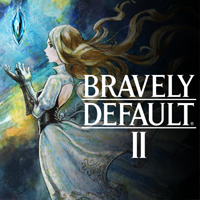Don’t sweat the details.
When the original Bravely Default released back in 2012, I was thoroughly impressed by its various twists on the tried and true classic JRPG formula. So much to the point that it ended up being my pick for game of the year. While Bravely Second followed a few years later as a worthy sequel that played things mostly on the safe side, I was concerned for the series as many years went by without any news.
So, when it was finally announced that Bravely Default would return for the Switch, I was absolutely thrilled. Still, having been many years since the last title, I wondered if they could do the series justice on a new platform. As is the case with many series in the past, a jump to a new platform often means a radical decrease in quality and I feared that trend would continue with Bravely Default but luckily, this was not the case.
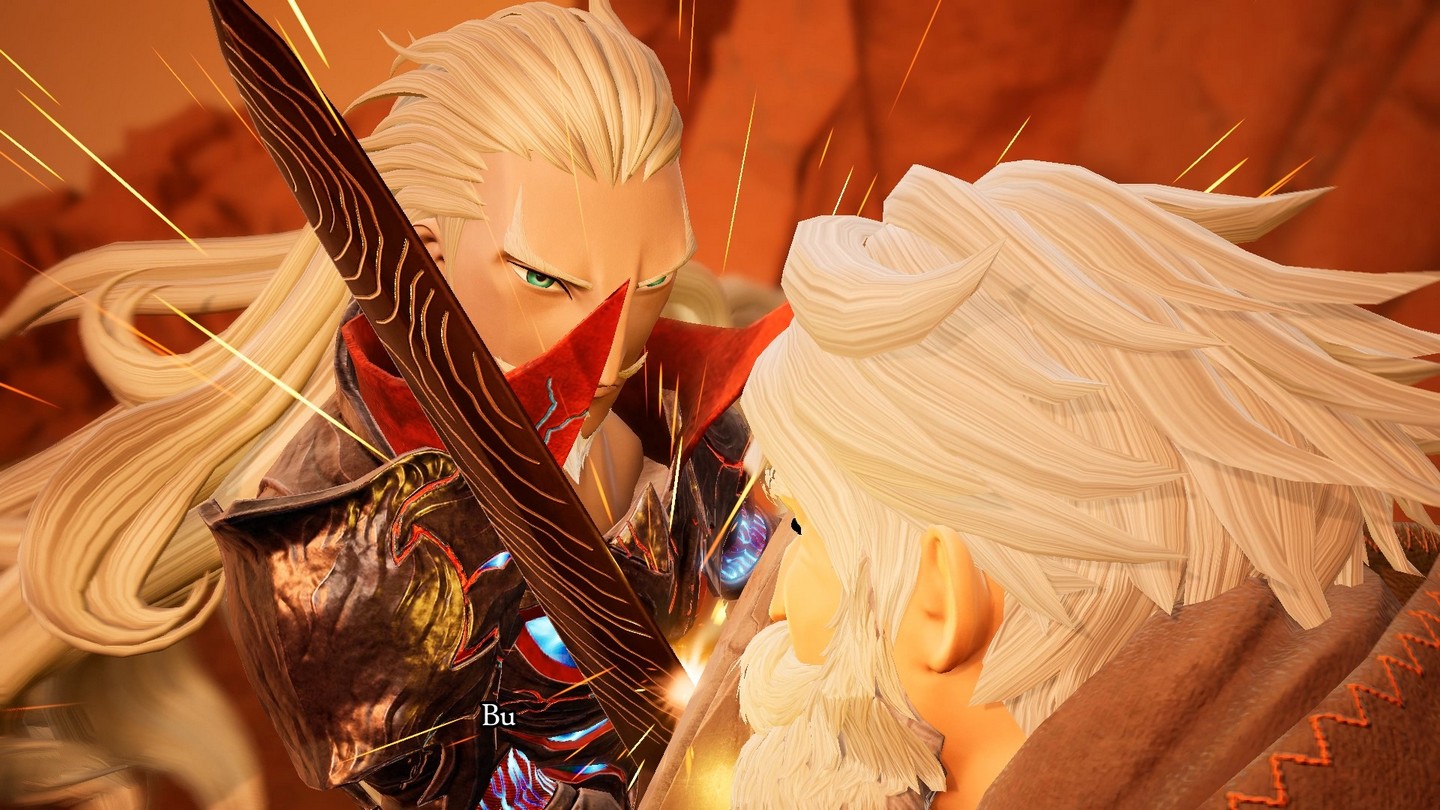
BORN IN A WORLD OF STRIFE!
After a shipwreck, a castaway by the name of Adol, I mean, Seth wakes up in an unfamiliar land, rescued by two strangers on a mission. Without much direction on how he might be able to return home, he decides to join his rescuers on their mission to reclaim the elemental crystals in the wrong hands that are causing havoc across the world.
As is the style for the series, the story told in BD2 feels like a throwback to classic JRPGs, especially the older Final Fantasy titles that centered around mystical crystals. Luckily, there are more nuances to the tale, with twists that work against tired tropes, but overall it felt a bit lacking due to the uninteresting main antagonist and not enough character development from the main party.
Compared to the cast of Bravely Default 1 and its direct sequel, I found that it took a long time for the characters to grow on me, and even though I ended up ultimately liking them, I can’t help but feel that the dynamic between them felt a bit stale, especially with Seth and Gloria feeling bland and boring. Thankfully, the two traveling companions, Adelle and Elvis, are much more fun and interesting with their various antics, but when half the main cast is boring, it’s a bit of a problem. There are character focused quests that flesh out the personality and motivations of the main cast, as well as constant skits that pop up, but they lacked a sense of serious development, both individually and as a party.
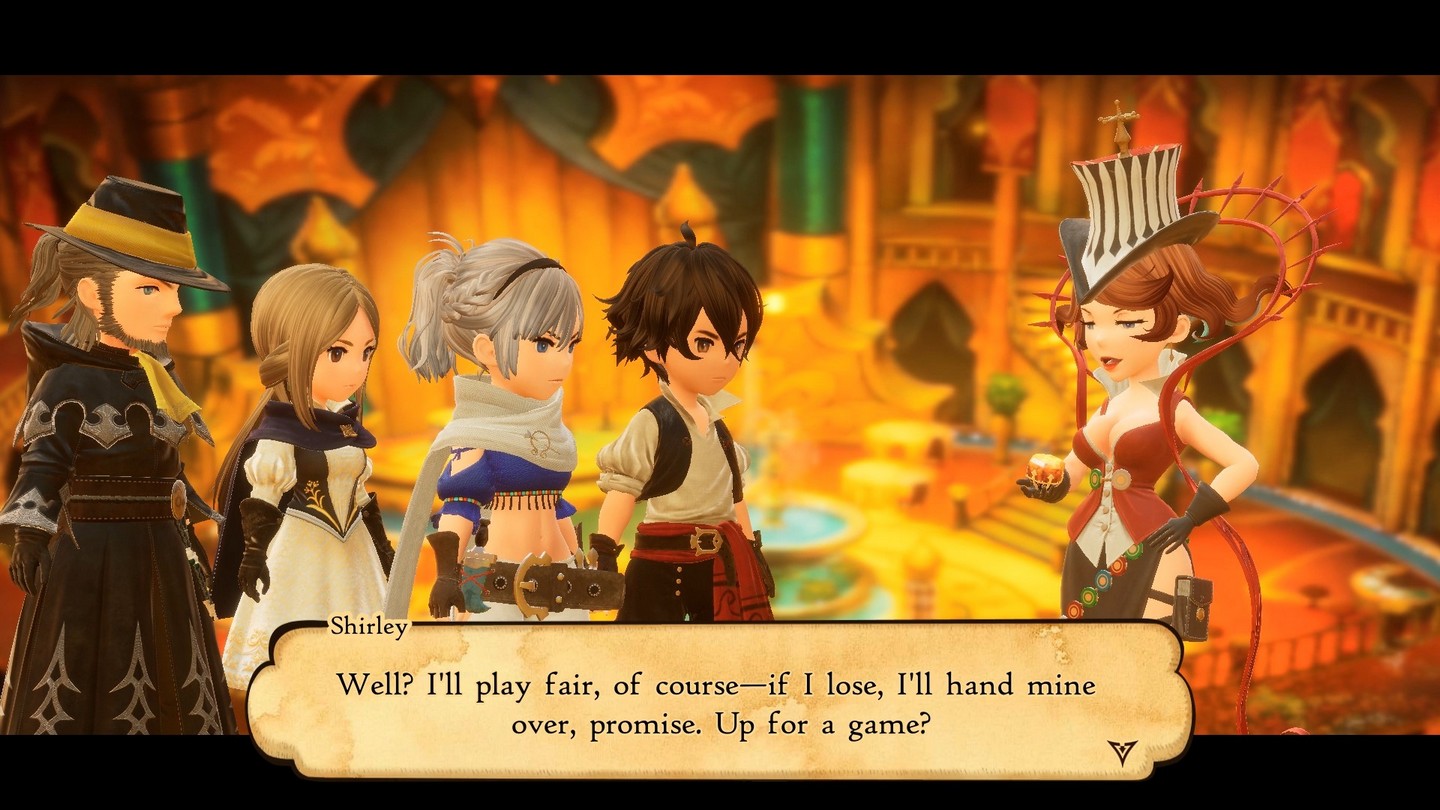
It took longer than I’d like for me to start caring about the characters and their plight.
Given that the story and the characters are a bit lacking this time around, they really needed to hit it out of the park with the gameplay, and luckily for everyone involved, they certainly managed to do just that.
Gone are the random encounters that were fully customizable, the enemies are now visible on the map and must be touched to start the battle. While I initially lamented the loss of the controlled random encounters, I came around in favor of the new system when I became a monster wrangler, herding weak monsters to a corner by making them run away from me to start chain battles which gave massive bonuses to end of battle rewards.
The longer the chain, the higher the multipliers being added to the rewards, which allowed me to gain multiple levels on a job, and herding monsters became a mini-game onto itself to see how many fights I could chain by grouping the enemies in one corner of the map. Even though it took some time to set up, maxing out jobs which would have otherwise taken me hours to do normally in a matter of 20-30 minutes was very addictive once I had the process down to a science.
Leveling jobs was more important than just leveling as well, as they opened up more mix & match passive skills which I could combine to make some truly devastating builds. In fact, each job I unlocked made me feel like I was Thanos diligently collecting Infinity Stones. Each job collected represented another possibility, and ultimately more power, and I was eagerly anticipating every new asterisk holder fight.
The sheer depth of possibility in creating new party compositions in BD 2 is the best of the series so far, and easily my favorite part of the game, as I gleefully spent hours in the menus and test battles seeing if certain combinations of skills/jobs/equipment would synergize well.
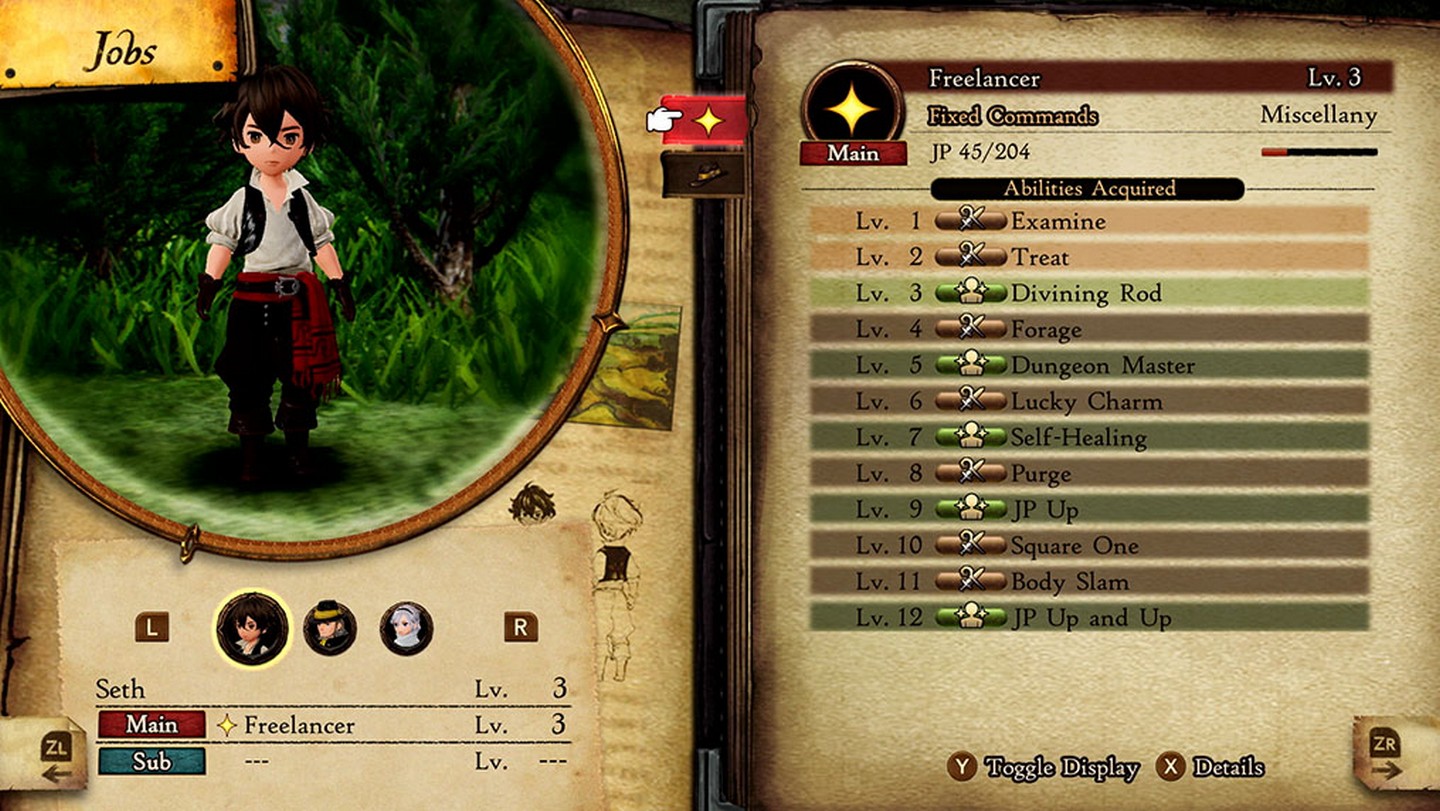
This menu is where most fights are won and lost before they even begin.
As for the combat, it still retains the turn reserving (default) and turn expanding (brave) mechanic. The major difference is that turns are individual based instead of party centric, so there’s no need to queue up the entire party’s worth of moves and hope so and so acts before someone else. It’s definitely a step up in terms of giving more control of the strategic elements of the combat, and I felt more in control with fewer situations that felt like I was robbed since I can’t queue up actions that will ultimately end up being blocked by some other action.
The battle encounters pose a fair challenge as well even on the standard difficulty, and I felt like I really had to use the tools that I had correctly in order to succeed, but eventually I became so strong that I was just face rolling most things, which was a little dull but satisfying as well in a different way.
As the developers are fully aware how incredibly broken you can become even fairly early on in the game with some ingenuity and persistence,they implemented different types of “counter” actions to the various boss encounters that discouraged trying to use the same tactic for every fight, which was great. It encouraged me to think up new builds to overcome the challenge posed to me, which fed into the element of the game, I enjoyed the most.
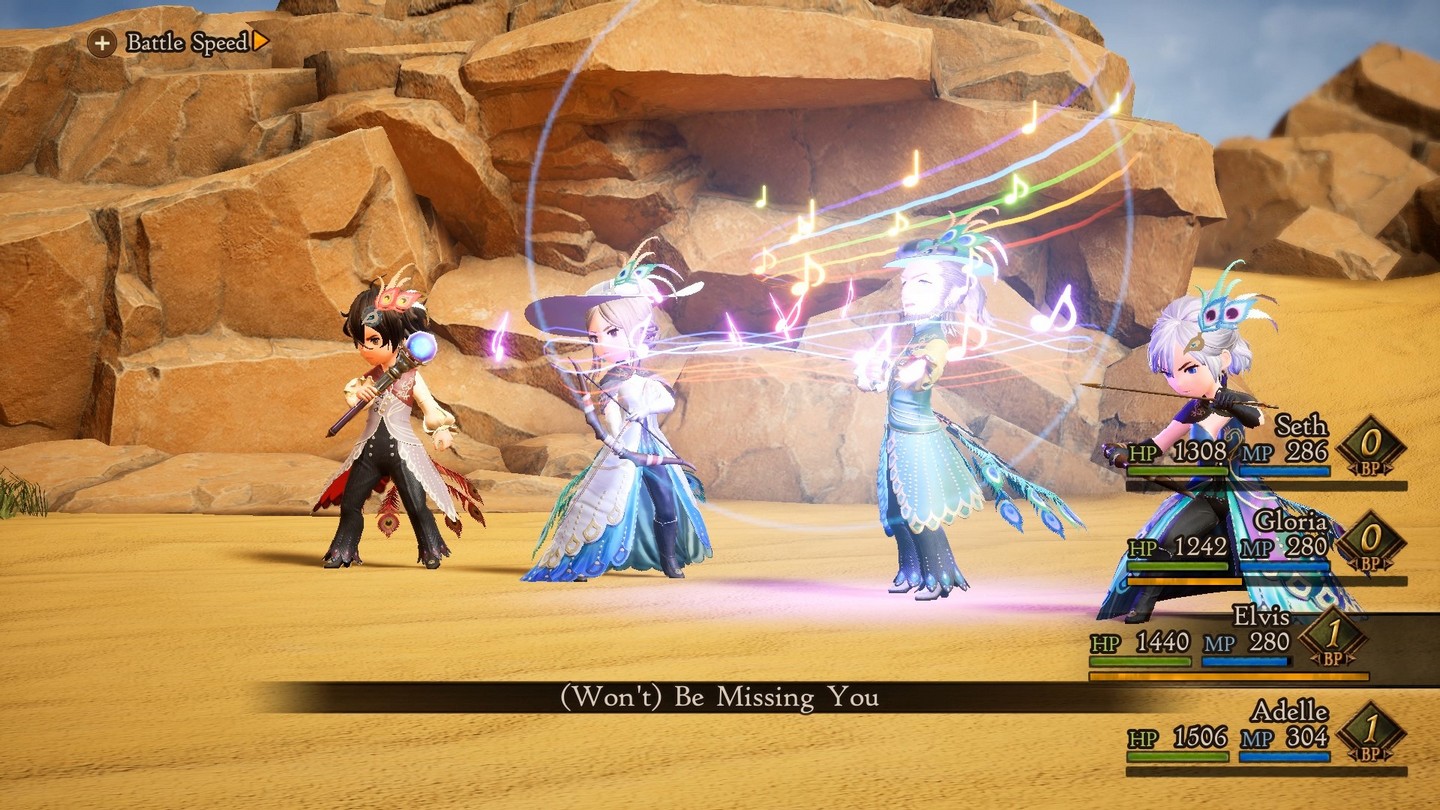
Let me sing for you the song of my people.
From a presentation standpoint, the gorgeous background work the series is known for is back, and it looks even better on a large TV. Unfortunately, the character models looked off to me in comparison, and while I admit that it’s a matter of preference, I can’t quite put a finger on why I don’t like them. Perhaps it’s because they look like simple clay figures and don’t animate all that much. Being on the Switch, performance is always a concern, and while it certainly dips quite often in the overworld as well as in combat, it didn’t really hinder my enjoyment of the game.
On the other side of the presentation is the music, and Revo makes their triumphant return to compose an epic soundtrack that not only hits all the right notes no matter the situation but also manages to implement the music in such a way that not only sets the mood but also heightens the tension to the next level. I didn’t think it was possible for them to come close to topping their legendary “Serpent Eating the Ground”, but they came damn close in my book and that’s an amazing achievement unto itself.
Despite falling a bit short in the story and characters department compared to its predecessors, Bravely Default 2’s satisfying combat encounters, deep job customization and stellar soundtrack makes it a worthy comeback for this fan favorite series.
Fun Tidbit – There are multiple false endings to the game so even if you hit the credits, chances are you’ve still got plenty of game to play.
Review copy of game provided by publisher.
